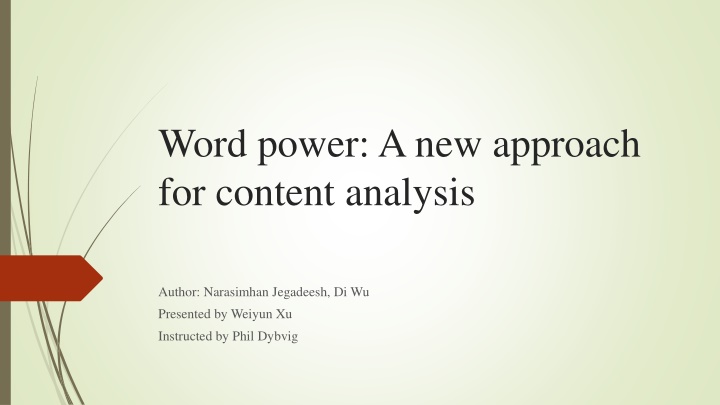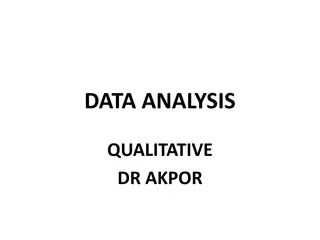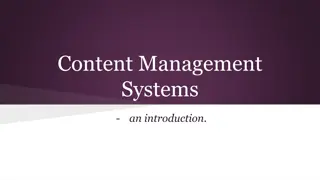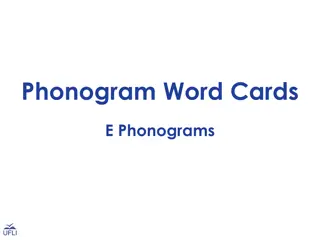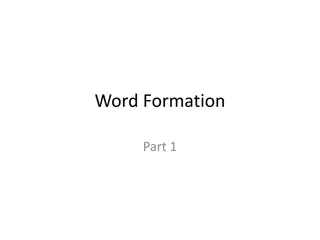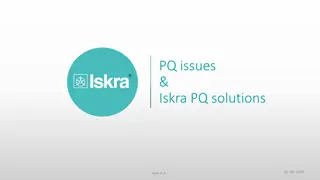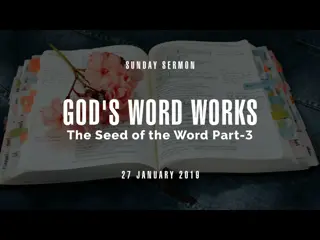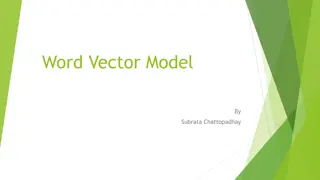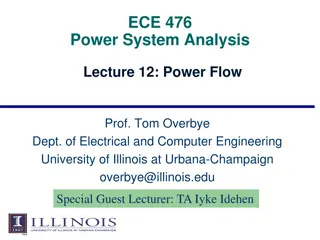Word Power: Innovative Approach for Content Analysis
This study introduces a new method for content analysis that categorizes words as positive or negative, mapping them into quantitative scores. Utilizing lexicons of positive and negative words, the approach aims to determine the strength of words in conveying tones. The methodology involves defining a lexicon, mapping words to scores, and exploring the relationship between scores and stock returns within a specified timeframe. The research presents empirical tests on market reactions to different tones in documents like 10-Ks and IPO prospectuses, shedding light on the timeliness of market responses and the relationship to underpricing.
Download Presentation

Please find below an Image/Link to download the presentation.
The content on the website is provided AS IS for your information and personal use only. It may not be sold, licensed, or shared on other websites without obtaining consent from the author.If you encounter any issues during the download, it is possible that the publisher has removed the file from their server.
You are allowed to download the files provided on this website for personal or commercial use, subject to the condition that they are used lawfully. All files are the property of their respective owners.
The content on the website is provided AS IS for your information and personal use only. It may not be sold, licensed, or shared on other websites without obtaining consent from the author.
E N D
Presentation Transcript
Word power: A new approach for content analysis Author: Narasimhan Jegadeesh, Di Wu Presented by Weiyun Xu Instructed by Phil Dybvig
Outline Introduction of content analysis Methodology Data Source Results of empirical tests Timeliness of market reaction to the tone of 10-Ks Relation between tone of IPO prospectuses and underpricing Discussion
Introduction of content analysis 1. Word List each word is categorized as positive or negative 2. Content analysis algorithm map descriptive content of any document into a quantitative score In this paper, it presents a new approach to determine the strength of various words in conveying negative or positive tone
Methodology: define lexicon They use the negative and positive word lists constructed by Loughranand McDonald(2011). The LM list contains 353 positive words and 2,337 negative words. In LM list, different inflections of a word are counted as separate words. For example, the word falsify and its inflections falsifies, falsified, falsifying, falsification, and falsifications are all considered as separate words. Expect all these inflections to have the same strength and group them together In the end, the list reduces to 123 positive words and 718 negative words. They perform this process manually to ensure no mistakes.
Methodology: how to map words to score ? (????,?)1 ??????= ?? ?=1 ?:???????? ? ?:???? ? ??:???? ? ??? ???? ? ??,?:? ? ?????? ?? ??????????? ?? ???? ? ?? ???????? ? 1 ?? :??????? ? ? ???? ? ?? ? ? ????? ?? ?????????? ??????? ?? ? ? ????? ?????? ?? ?????
Methodology: relation between the score and the contemporaneous stock return cannot separately estimate b and wj at this stage because the weights measure the relative strength of each word in the lexicon and the weights can be scaled arbitrarily
Data Time frame: from 1995 to 2010 Sifting criteria: 1. The 10-K should be the first filing for the year by the company. 2. EDGAR identifies firms that file 10-Ks using Central Index Key (CIK). variables. We exclude all firms for which we do not have these data for the years when the data are not available. 3. Our tests use market capitalization, book-to-market ratio, and turnover as control the filing date 4. To mitigate the effect of bid-ask bounces, the stock price should beat at least $3:00 on context of non-financial firms might not have negative connotations for financial firms. 5. A number of words such as risk and casualty that are perceived as negative words in the
Data Summary The final sample contains 45,860 filings between1995 and 2010 and 7,606 unique firms. The mean market value is $3,09 billion and the book-to-market ratio has a mean value of 0.65.
Results: Term weight estimates It presents the distribution of standardized weights for positive and negative words estimated using the entire 1995 2010 sample period. Sixteen negative and seven positive words have an absolute magnitude of weights greater than 2, and the figure presents their combined frequencies at the extreme ends.
Results: Stability of document tone scores By using longer period, the weights are estimated more precisely with longer sample periods. These results indicate that we should use as long a sample period as possible to estimate term weights.
The table presents the five positive and words with the largest word power weights within each term frequency quintile. Results: Word power weights versus inverse document frequency weights
Results: Determinants of tone Size: Natural logarithm of the market capitalization of equity at the end of the month before the 10-K filing date BM: Ratio of the book value of equity as of the fiscal year end in the 10-K Volatility: Standard deviation of the firm-specific component of returns estimated using up to 60months of data as of the end of the month before the filing date. Turnover: Natural logarithm of the number of shares traded during the period from 6 to252 trading days before the filing date divided by the number of shares outstanding on the filing date. EADRet: Return over the three-day window[t-1, t+1] around the latest earnings announcement date minus the CRSP value-weight index return over the same period. Accruals: One-year change in current assets excluding cash minus change in current liabilities excluding long-term debt in current liabilities and taxes payables minus depreciation divided by average Total assets.
Results: Determinants of tone
Results: Combined lexicons Their approach removes much of the subjectivity inherent in compiling lexicons composed of words with positive or negative connotations
Results: Completeness of word list Their term weighting measure reliably quantifies tone even when presented with an incomplete word list, which in turn shows that the choice of term weighting scheme is at least as important as the completeness of the lexicon
Timeliness of market reaction to tone These results further reinforce the importance of accurately measuring the tone for fully understanding the timeliness of market s reaction to document tone
Tone of IPO prospectus and underpricing The results support the hypothesis that the potential for downside risk is positively related to IPO under pricing. It also indicate that the term weights are useful in quantifying the tone of IPO prospectuses
Discussion 1. Will data incompleteness affect the result? 2. Is it appropriate to assuming linear relationships?
